The subtle art of terrarium care can take a while to master.
When perfectly balanced, terrariums can pretty much look after themselves. Being notoriously low maintenance is the main appeal, right?
But unfortunately, lots of people tend to trip up in the early days of finding that balance.
I’ve built a wide variety of terrariums over the years (with plenty of experimental failures) and, in the process, identified all the main points where they go wrong.
In this guide, we’re going to cover each of the main terrarium care mistakes, and I’ll teach you how to avoid them.
Let’s get into it!
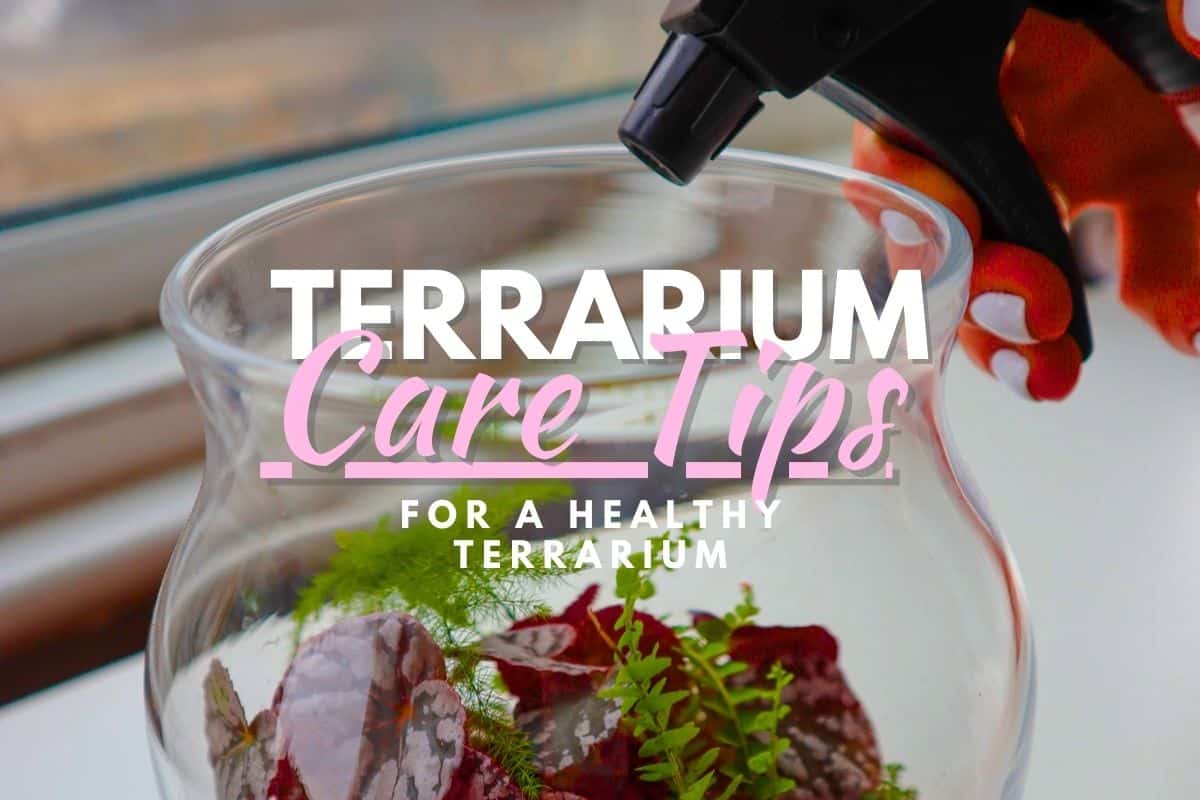
Terrarium Tribe is reader-supported. When you purchase through links on our site, we may earn an affiliate commission (at no further cost to you). 💜
Key Closed Terrarium Care Tips
1. Check for Humidity – Are You Underwatering?
Being a closed system, terrariums mostly water themselves if the conditions are right.
Of course, that’s provided you have enough water in the system.
The best way to identify this? Check the humidity. The amount of condensation on the terrarium glass is representative of how much moisture is in the air.
If the humidity in your terrarium is approaching 80% or higher (as tropical plants really love), the glass will be fogged up somewhat during the hottest parts of the day.
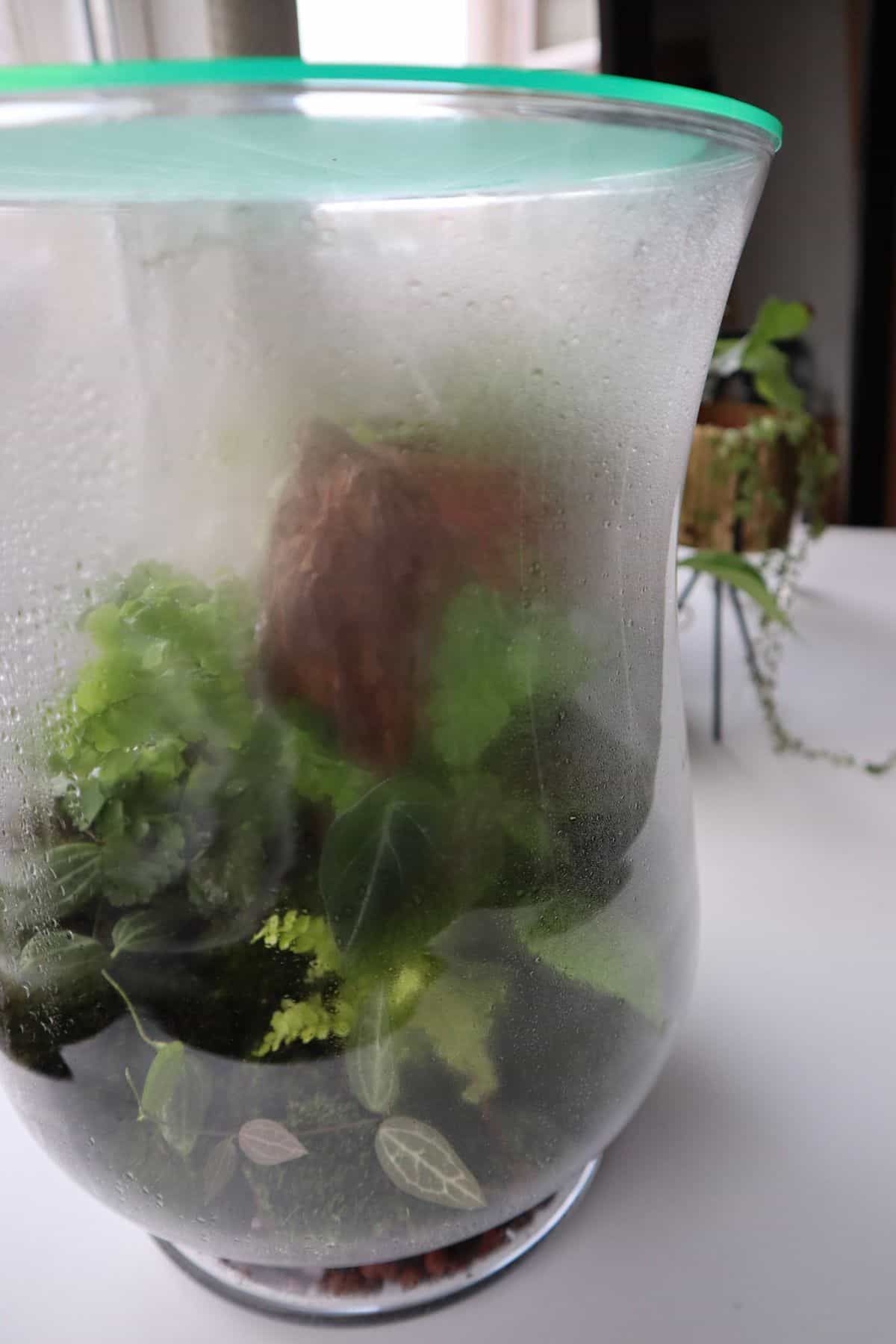
That means that if you’re not seeing any condensation, it probably needs a top-up. You can also check for wilting, very dry soil, dried-out leaves, and a bunch of other indicating factors.
On the flip side, if there are consistently heavy droplets present, you’ve gone too far, which leads me to the next issue.
2. Watch Your Watering – Are You Overwatering?
Over-watering is a much greater risk than under-watering.
It’s very easy to do and, unfortunately, very difficult to fix – so it’s best to add just a little at a time.
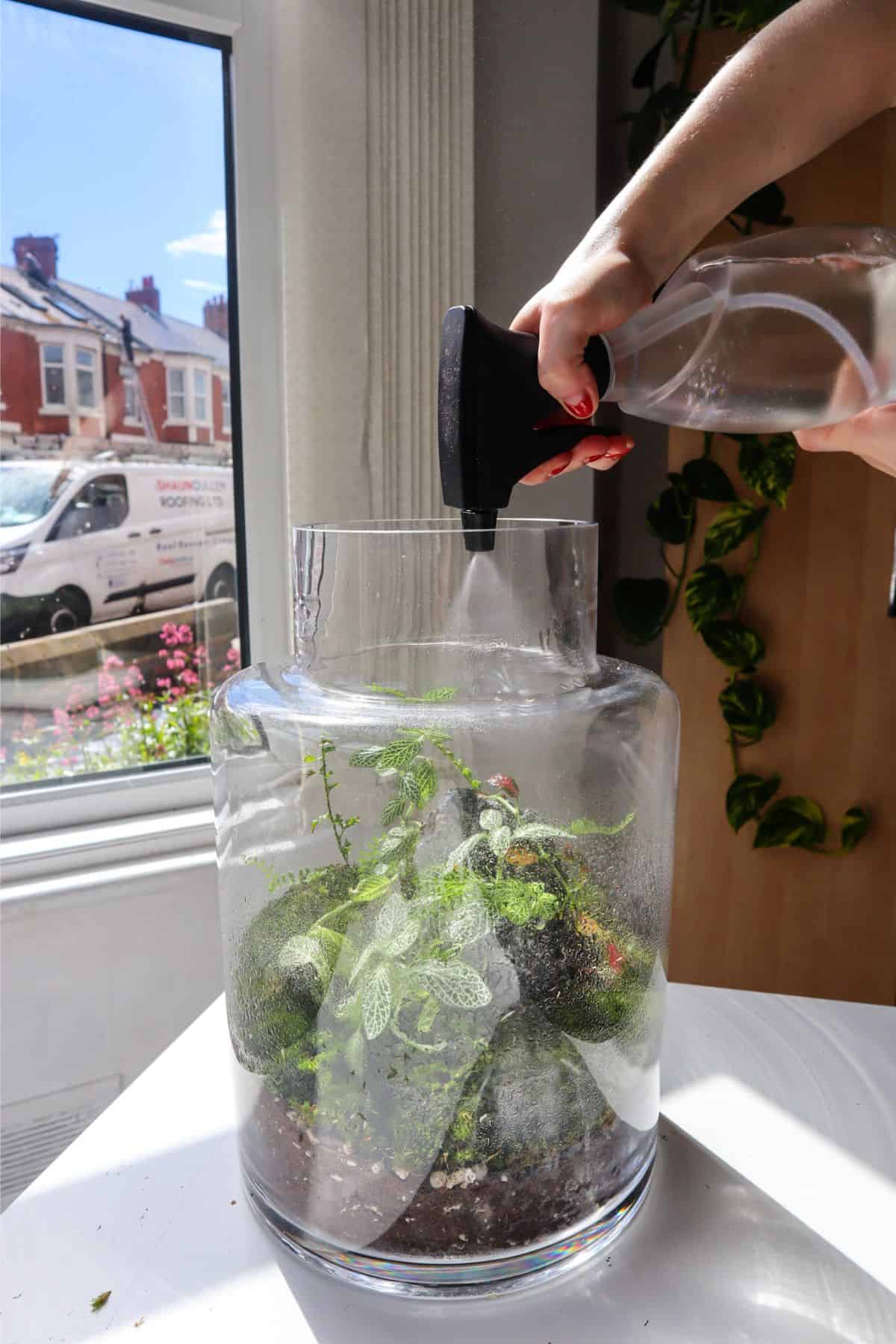
Heavy condensation is one indicator of overwatering, but it’s not the only one.
Remember, you never want to have a saturated substrate. A very light moisture is all you need. If the soil looks dark and wet, you’d be best off opening up your terrarium and letting it dry out a little.
That being said, if you’ve gone that far, it can be hard to recover.
To give yourself some wiggle room, it’s best to incorporate a terrarium drainage layer into your build (we recommend using LECA balls as they’re lightweight and absorbent), though ideally, you’ll not see any excess water pooling there.
👉 See my full guide on how to water a terrarium.
3. Is Your Terrarium Getting Too Little (or Too Much) Light?
Sunlight is essential for terrarium plants, but let’s not forget that it’s essentially a greenhouse. It’s all too easy to scorch your plants in direct sunlight…
On the flip side, though many terrarium plants tend to be considered “low light,” that absolutely does not mean no light. You need to give them something to work with.
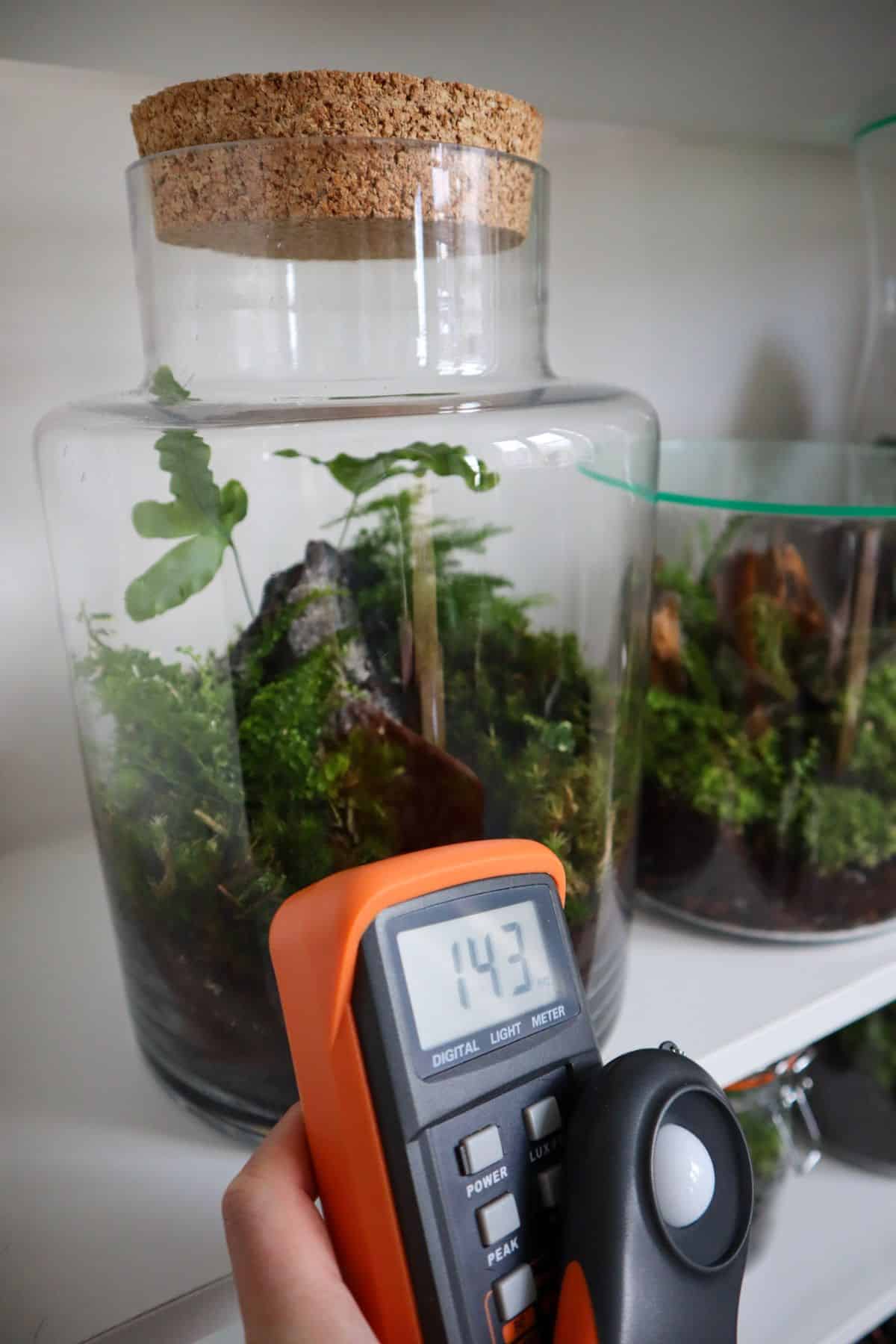
The gold standard for most tropical plants is considered to be bright indirect light. Something you could comfortably read a book in but wouldn’t feel the warmth on your skin.
A North-facing window is a good bet for consistent indirect light, or pop your terrarium a few feet away from a stronger light source.
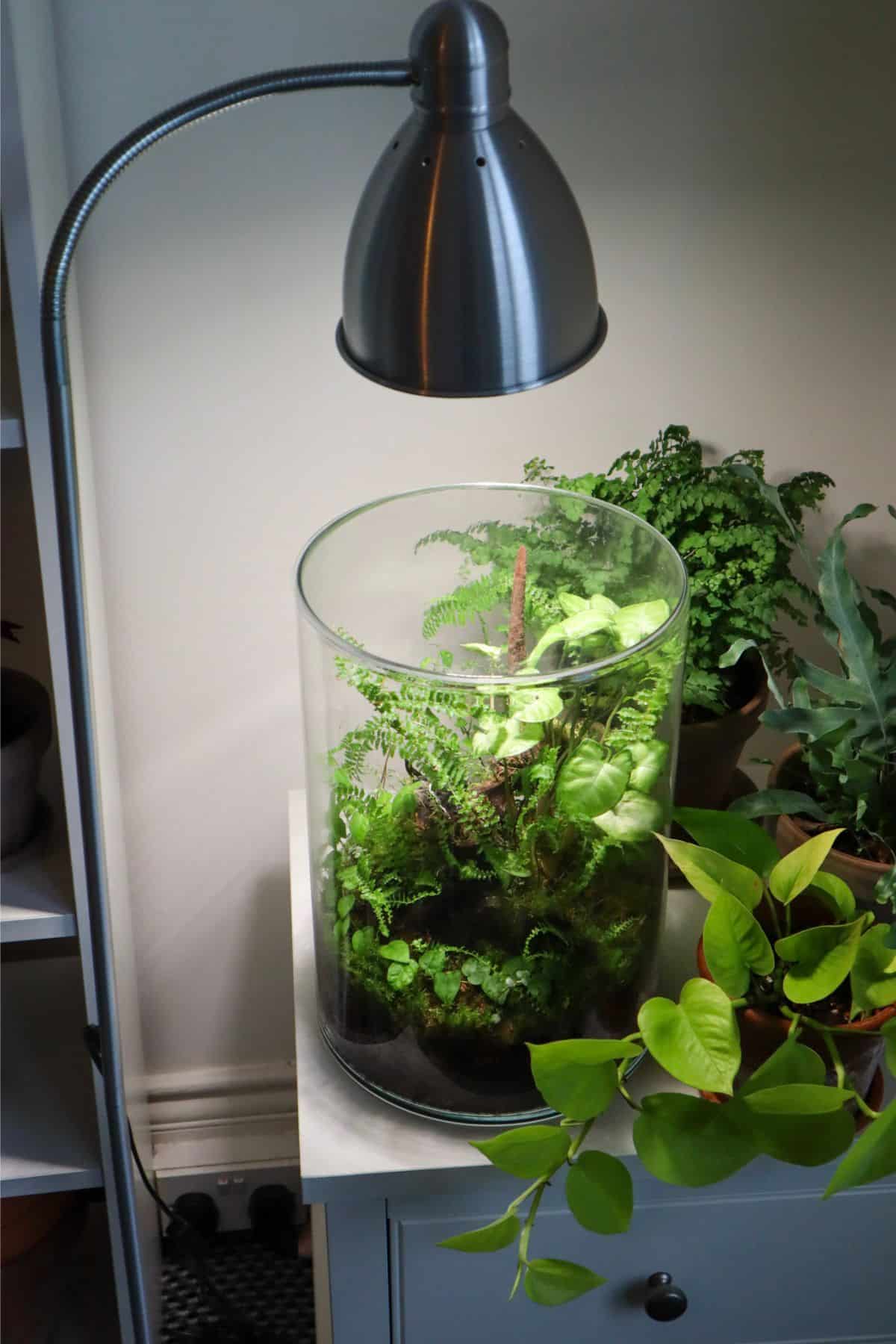
👉 For more help, see my complete guide to light for terrariums.
4. Watch Out for Mold
Mold is the silent enemy waiting in the shadows of all terrariums.
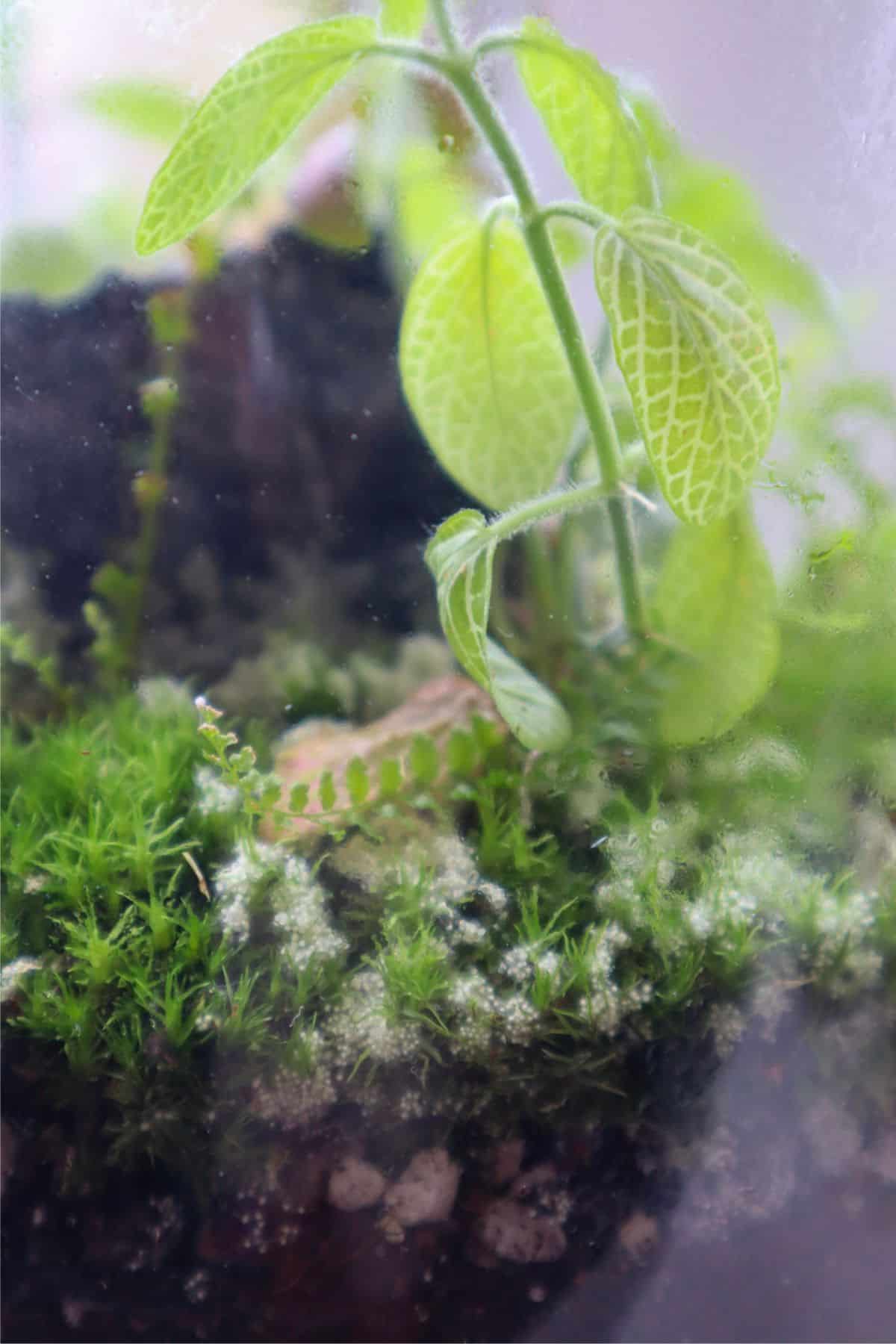
But just like a wave of British tourists flocking to Spain in the summer, mold can quickly take over and ruin a beautiful environment.
It’s extremely hard to gauge whether mold is going to be a big issue. Sometimes, it spells the end of your terrarium, but it’ll often go away on its own when it’s run its course. (After all, it’s part of a natural decomposition cycle – it shouldn’t affect healthy plants).
But to be on the safe side, I do recommend at least some form of intervention – here are some ways to tackle it:
- Opening up the lid and getting some more airflow in can help a lot.
- Some people like to deal with small patches using a Q-tip and some hydrogen peroxide. A quick wipe should do the trick.
- You can spray your terrarium with chamomile tea, as it contains sulfur compounds that help keep mold at bay.
Ultimately, prevention is better than cure, and springtails are by far the easiest way to stop mold from getting out of hand in the first place.
👉 Grab a springtails culture on our online store.
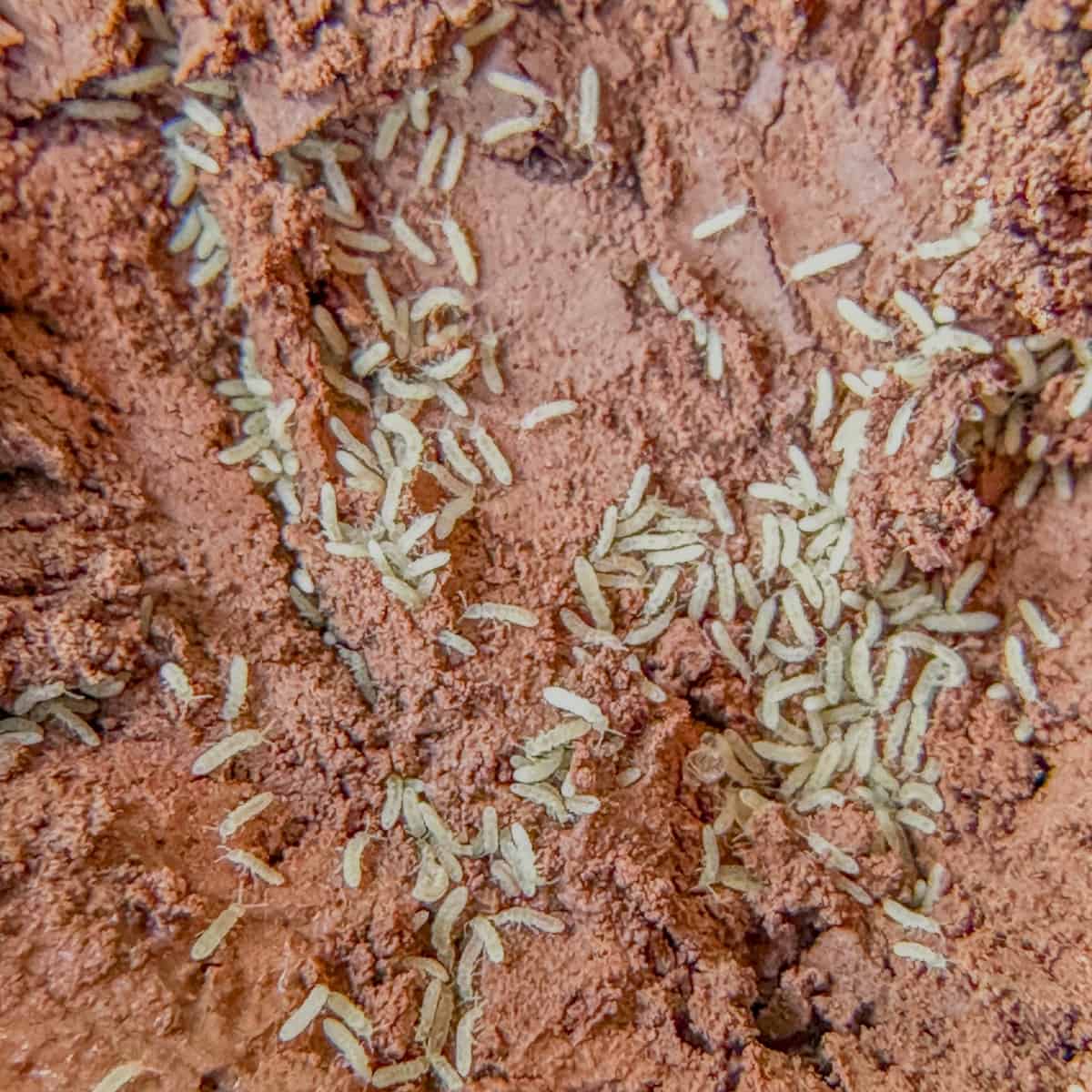
That said, adding them once you have a giant mold bloom is likely too late – prevention is better than cure in this case.
See my full guide to tackling terrarium mold if it’s an issue you’re dealing with.
5. Catch it Early – Remove Rotting Plants
Plants cross the rainbow bridge; it’s natural.
Don’t take it personally, but please do act on it.
While a bioactive clean-up crew is exceptionally helpful, a small springtail colony may not have the capacity to deal with it if a big leaf or plant goes down.
If left unchecked, any deceased plant matter can rot and cause a mold bloom, so to be on the safe side, I always recommend removing the first signs right away.
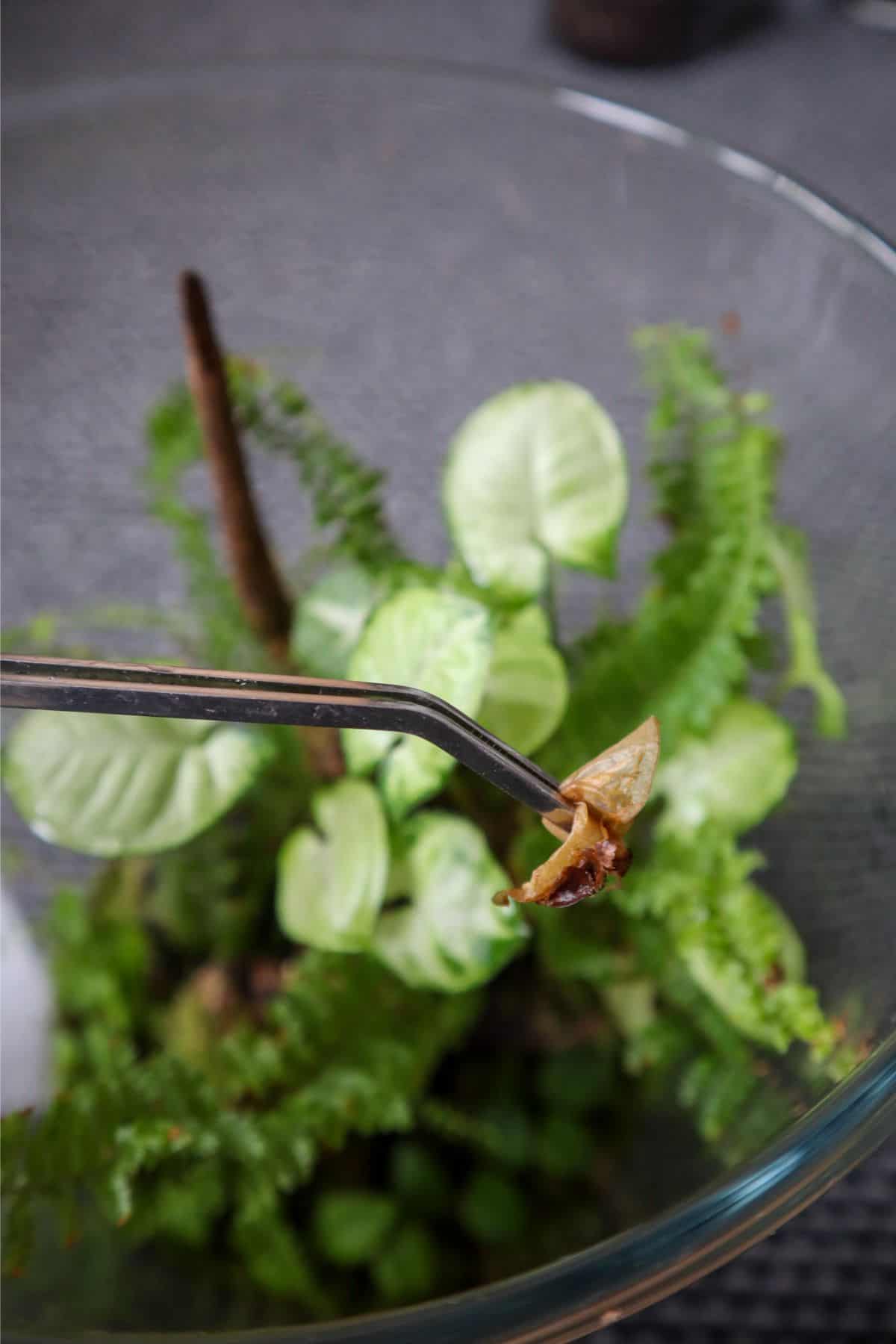
6. Overgrown Plants? Trim Them Back
Sure, we all want healthy, happy plants in our terrarium, but when working with limited space, creating the best possible conditions for our plants may result in too much growth.
Over the course of years, almost all terrariums will need some plant intervention (except for the likes of moss terrariums).
Though you want some room for plants to grow in and settle in the environment, you still want to preserve the sense of space and scale you created in the beginning.
They also need light and water, both of which can be altered through excessive plant growth, and as we know, maintaining the balance is important.
Here’s what to look for:
- Plants becoming so thick and bushy that they begin to block light from reaching others.
- Plants growing so tall they reach the top of the container.
- Fast-growing plants that are beginning to take over.
- Plants growing against the side of the container – the condensation can damage the leaves.
When you run into this, trim the foliage as you deem appropriate, or you can prune a plant’s roots to slow its growth.
In some circumstances, you might even need to replace larger plants with smaller ones.
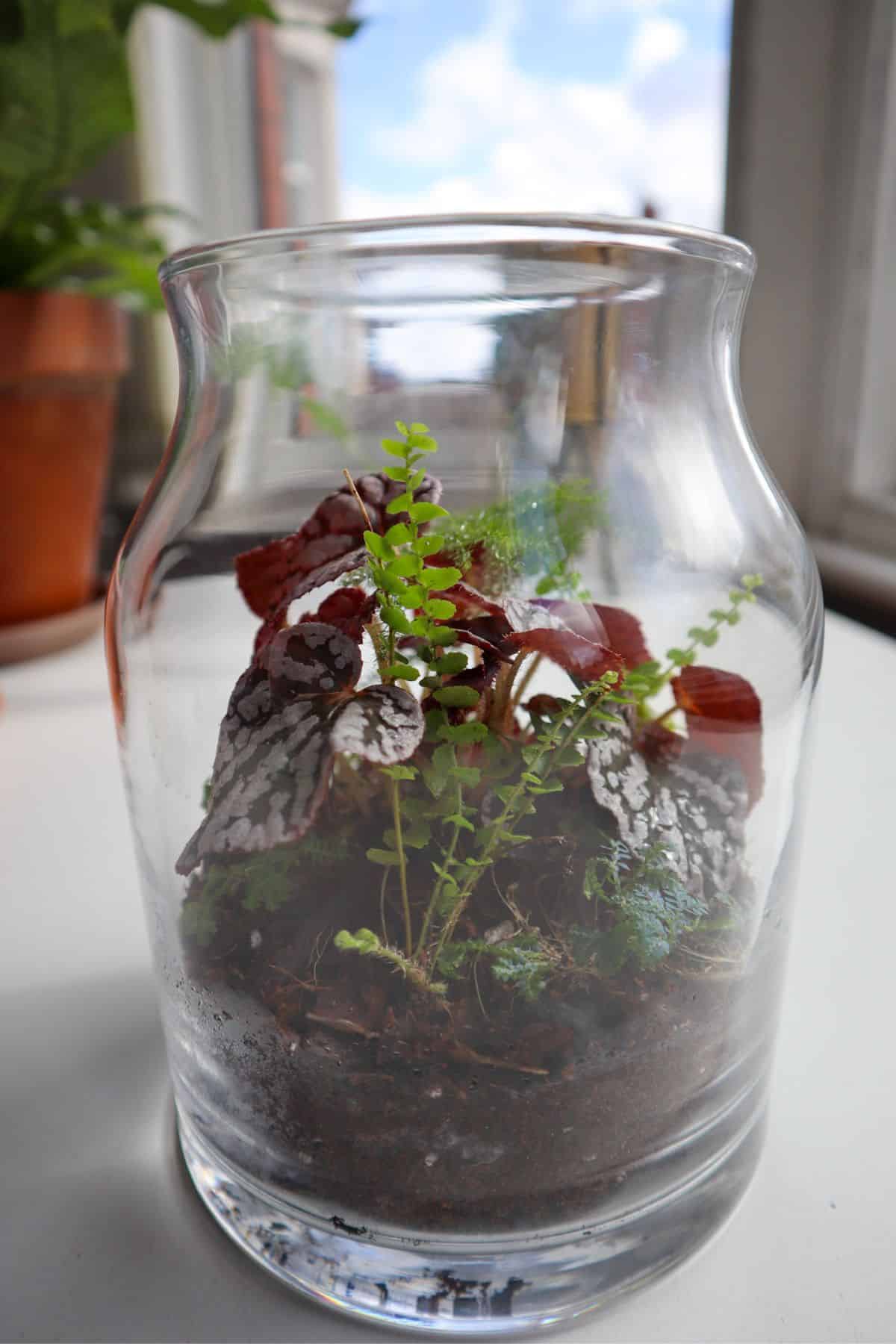
7. Is the Terrarium Glass Dirty? Give it a Clean
Nobody likes dirty glass, and neither do your plants.
Not only does it look awful (and half the fun of terrariums is being able to see them), but it can also restrict the light that the plants receive.
Give the inside of the glass a clean with a lint-free cloth and some warm purified water to remove any buildup.
Watering your plants with hard tap water (high mineral content) is generally fine for your plants, but it can leave a white calcium residue on the glass.
To get around this, I recommend watering your plants with purified water; deionized, distilled, carbon filtered – they’ll all do the trick.
Deionized water is probably the cheapest and most freely available (you can grab a bottle on Amazon).
Terrarium Care FAQ
Learning the basics of terrarium care will go a long way, but applying them to every terrarium will be different. Over time, you’ll come to understand the nuances of each terrarium, and you’ll be able to better identify when things are going wrong.
Terrariums do have an earthy smell (after all, they are earth), but any hint of an unpleasant odor is an indicator that something nasty is brewing.
Over to You
Getting your terrarium perfectly balanced isn’t always as easy as it seems.
Do you have any routines or care practices to help us keep our terrariums looking and feeling their best? Let us know in the comments.

Thanks for any help you can give me. My mother used to sell them in her florist, but I’ve never had one till now. Mine is in a 4 ft aqaurium tank new of course. I have also done the layers as in potting mix ,sand, charcoal etc.
Hey Wayne, is there anything in particular you need help with? Feel free to post any questions in the Facebook group 😊